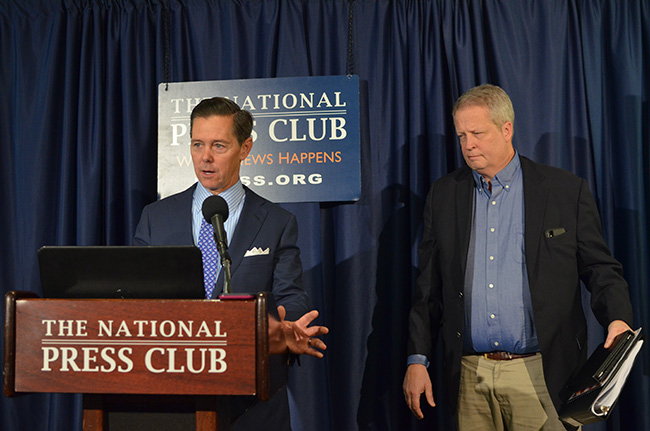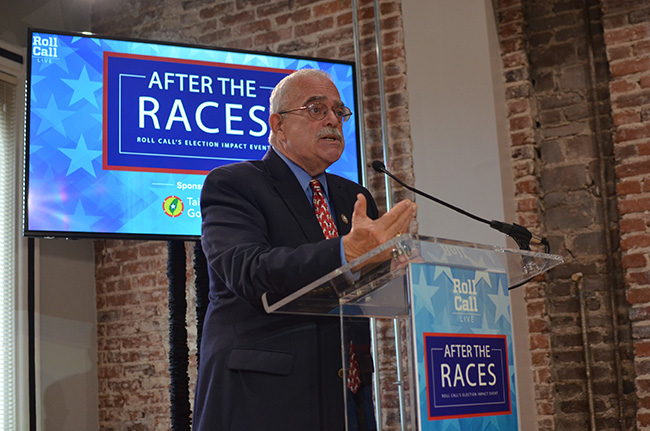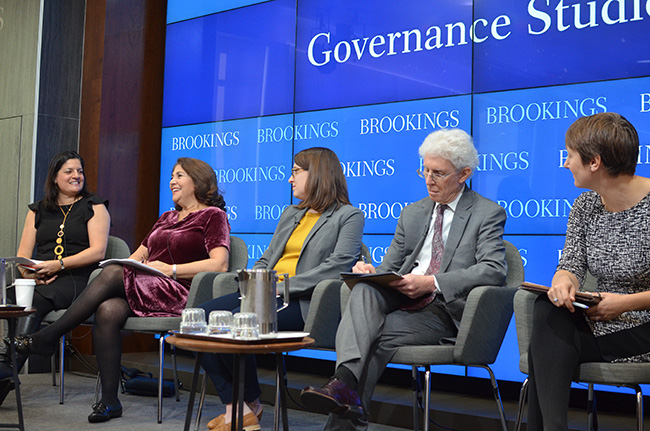Governor, U.S. Senate and U.S. House Races: U.S. Senate | U.S. House | Governors
this
page
updated Nov. 27, 2018
Outcome: A Split Decision
The
most expensive midterm elections in American history produced as split
decision. Amid extraordinary voter turnout1, Democrats regained
control of the U.S. House, picked up governor's offices and legislative
seats, but lost several seats in the U.S. Senate. It was not a
blue tsunami. Neither was it what some Republicans termed a
"ripple." For Democrats, losses in some high profile races such
as Beto O'Rourke for Senate in Texas, Stacey Abrams for Governor in
Georgia, and Andrew Gilllum for Governor in
Florida took some of the luster off
Election
Night; it was not the across-the-board repudiation of Trump and
the Republicans that they had hoped for. However, as results became clearer in the days following November 6 it was evident they had made significant gains. This was particularly noticeable in U.S. House races, where they seemed to pick up one after another of the close contests. On Nov. 26, when T.J. Cox (D) pulled ahead of U.S. Rep. David Valadao (R) in the count in CA-21, a net gain of 40 seats was within reach. Further, the Cook Political Report's "House Popular Vote Tracker showed that, "Dems' national lead in raw House votes... broke the record for largest for either party in the history of midterm elections (previous record was 8.7 million set by Dems in 1974)." Democratic candidates for U.S. House obtained 53.2% of the vote compared to 45.1% for Republicans.
Significantly many women and minority candidates were successful. Third party and independent candidates had little success though. Richard Winger of Ballot Access News reported that "the minor party and independent vote for the top office in each state this year is only 2.8%. This is the lowest percentage since 1982, when it was only 1.8%."
The country remains deeply polarized, perhaps even more so than before. Nationally, with divided government and 2020 looming, it will likely be a challenge to get much done in the next two years. In the Senate, Republicans will continue to focus on judicial nominations while in the House, Democrats must balance oversight and legislative efforts.
Notes.
1. On Nov. 16, Michael McDonald, who runs the United States Election Project, tweeted, "Turnout update: Now at estimated 116.2 million votes cast in the 2018 general election or a turnout rate of 49.3%. This is the highest midterm turnout rate since 1914's 50.4% and the first midterm election to top 100 million votes".
2. David Wasserman and Ally Flinn. "2018 House Popular Vote Tracker." Cook Political Report.
_______________
Press Releases:
| More |
| Libertarian National Committee Green Party of the United States Center for American Women and Politics NALEO Educational Fund Campaign Finance Institute Christopher Newport University |
 |
| Faith & Freedom Coalition
founder and chairman Ralph Reed and pollster Glen Bolger. |
 |
| Christopher Newport University political scientist Rachel Bitecofer. |
 |
| U.S. Rep. Gerry Connolly (D-VA)
at Roll Call's "After the Races" event. |
 |
| Brookings Institution panel on "2018 midterm elections: results and implications." |
ADVERTISEMENT
Copyright
© 2017, 2018
Eric
M.
Appleman/Democracy
in
Action.
All
rights
reserved.
